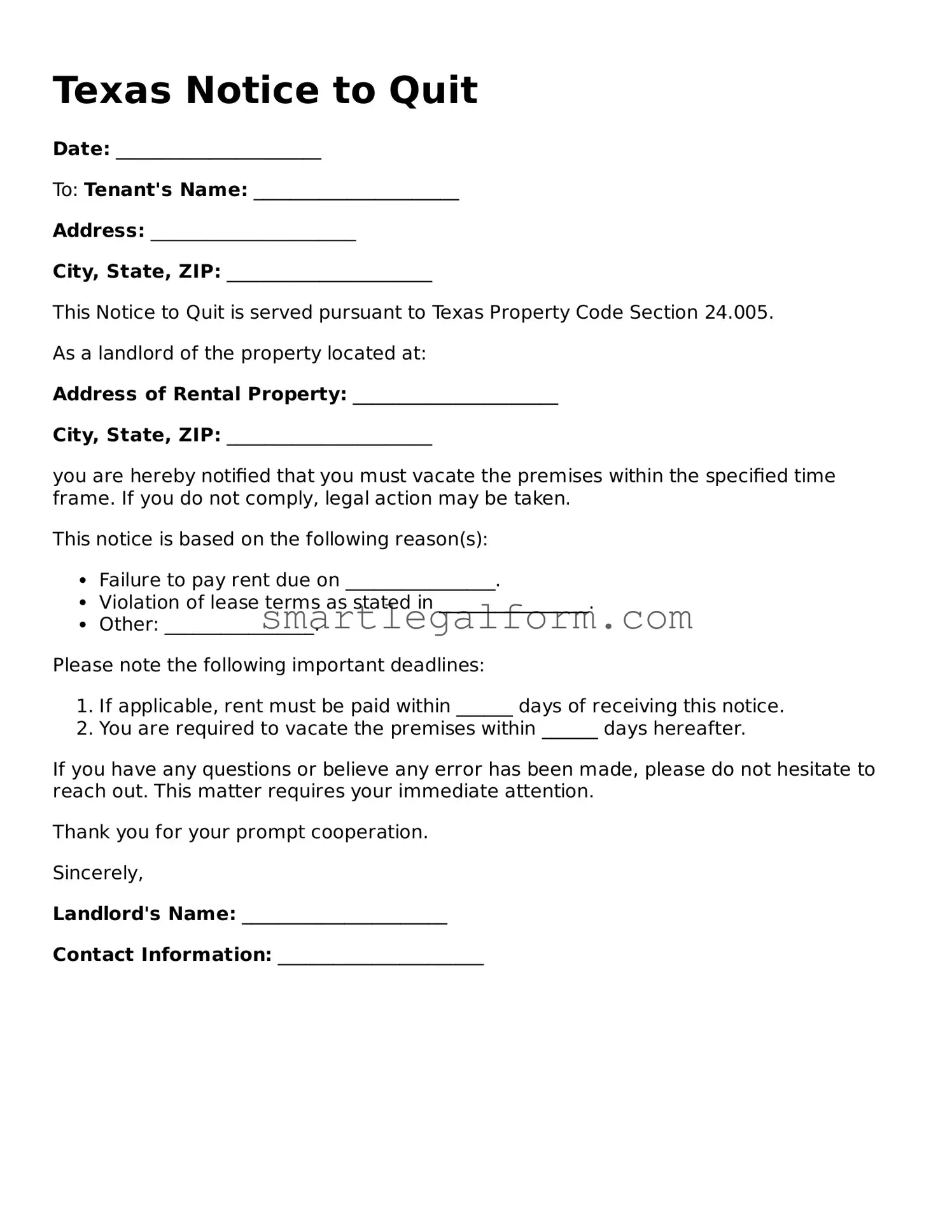Texas Notice to Quit
Date: ______________________
To: Tenant's Name: ______________________
Address: ______________________
City, State, ZIP: ______________________
This Notice to Quit is served pursuant to Texas Property Code Section 24.005.
As a landlord of the property located at:
Address of Rental Property: ______________________
City, State, ZIP: ______________________
you are hereby notified that you must vacate the premises within the specified time frame. If you do not comply, legal action may be taken.
This notice is based on the following reason(s):
- Failure to pay rent due on ________________.
- Violation of lease terms as stated in ________________.
- Other: ________________.
Please note the following important deadlines:
- If applicable, rent must be paid within ______ days of receiving this notice.
- You are required to vacate the premises within ______ days hereafter.
If you have any questions or believe any error has been made, please do not hesitate to reach out. This matter requires your immediate attention.
Thank you for your prompt cooperation.
Sincerely,
Landlord's Name: ______________________
Contact Information: ______________________
